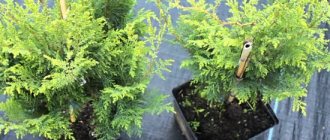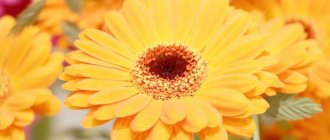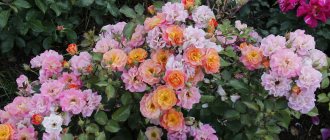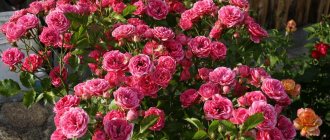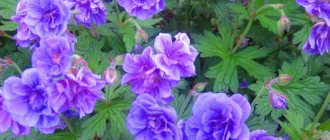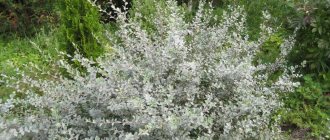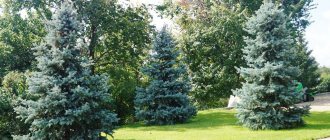Botanical description and history
ATTENTION : Garden or outdoor Kalanchoe has become so popular due to its unique method of reproduction, and not just because of its unpretentiousness in caring for itself.
The flower of this plant can reach a height of up to 50 centimeters. The leaves of this plant are heavy and oval-shaped with serrated edges. Children appear in the plant from brood buds, which in turn are located in the depressions between the jagged edges.
Garden Kalanchoe has its own roots , which grow directly on the mother plants. This young flower begins to develop roots and grows and develops as soon as the baby falls on the soil. This representative of Kalanchoe has one stem, without any branches.
The leaves grow up to 24 centimeters in length, but this depends on care. The leaves have a wonderful shine and a beautiful green color with a slight hint of blue. If the plant is absolutely healthy, then its leaves will grow upward all the time, and the edges will be slightly bent downwards.
The stem of this plant is quite weak and needs support . After a certain time, the outer leaves begin to wither and fall off, causing the stem to become bare.
Kalanchoe is native to the island of Madagascar. Also widespread in tropical Asia. Decorative varieties of this plant grow in Africa. Ornamental varieties also grow in tropical Africa. The priests of African tribes used it for rituals, as it was considered a symbol of strength. In the 18th century, Kalanchoe was mentioned for the first time by Europeans. Kalanchoe appeared in Europe only at the beginning of the 19th century.
Pests and diseases
Kalanchoe pinnate is unpretentious, but still sometimes gets sick. It can be attacked by viruses, fungi or pests. A diseased bush begins to wither, lose leaves and, if no action is taken, dies. The sooner treatment begins, the greater the chance of saving the flower. When the leaves and stem become covered with brown and brown spots, this is late blight. It occurs due to high humidity, so if the disease is detected, you should stop watering - the soil should dry out well. Next, fungicides are used, for example, “Profit Gold” or “Previkur”. These products are diluted in water according to the instructions and sprayed on the bush. In the future, it is necessary to reconsider the frequency of watering.
Sometimes, due to too hot and dry air, a white coating appears on the flower - powdery mildew. In this case, you need to ventilate the room more often or move the pot with the plant to a cooler place - in the spring and summer, a balcony is suitable. And if the leaves become sticky, pale spots similar to mush form on them, it means that the Kalanchoe has been affected by gray rot, in which case the plant needs to replace the soil. Both diseases can be treated with fungicides and good care.
When the trunk turns black and the leaves become smaller, it means the flower is simply cold. At temperatures below 15 degrees, the plant freezes and stem rot may develop. In this case, it is enough to reconsider the conditions of detention. But if the stem begins to rot, and round spots appear on the leaf blades, the flower cannot be saved. There is only one way out - to find healthy cuttings or babies on the diseased bush and grow new specimens from them.
If the leaves of a plant turn yellow and dry out, pests may have settled on it. They are brought in with poor-quality soil or fly into an open window. By sucking the juice from the stem and leaves, they can destroy the entire bush. Kalanchoe pinnate is susceptible to attack by the following types of insects:
- mealybug (the plant affected by it looks as if it was sprinkled with flour);
- scale insects (small round bugs that are visible to the naked eye);
- mites (due to their vital activity, a thin web is formed on the plant);
- aphids (this pest often hides on the inside of the leaf).
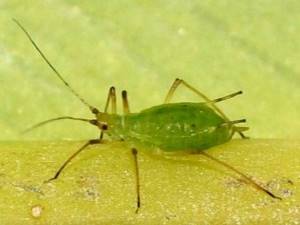
To get rid of mealybugs, the plant is sprayed with mineral oil, and the most affected parts of the bush are removed. It’s easy to get rid of scale insects: the bugs are removed from the leaves, and their locations are wiped with alcohol, then the plant is washed in soapy water. Ticks and aphids are afraid of soap solution; you can spray it on the affected plant. To do this, mix 20 g of laundry or tar soap in 1 liter of warm water. Cool to room temperature and apply using a spray bottle.
After treatment, it is necessary to do a preventive examination for a month, paying attention to the leaves and stem. If signs of a pest are detected, treatment should be repeated.
In advanced cases, insecticides are used, for example, Fitoverm, Actellik, Gaupsin. The treatment is carried out on the balcony wearing gloves and a respirator. Good prevention of any disease is proper care.
To learn how to achieve abundant re-blooming of Kalanchoe, see the following video.
Varieties and features
This beautiful plant has more than 100 types . The most popular are:
- Tubeflower.
- Cirrus.
- Degremona.
- Rosaline.
- Kalandiva.
- Mini mix.
- Blossfeld.
- Beharskoe (we wrote about Beharskoe and Felt Kalanchoe here).
On the pages of our website you will find a detailed description of Kalanchoe Don Sergio and Laciniata. You may also be interested in reading about the medicinal and flowering varieties of this plant, such as the varieties with feathery, white, red, pink and yellow flowers.
The influence of moon phases on plants
- The new moon is the worst time for gardening work. Do not plant or replant anything. This unfavorable period lasts three days, the day before the new moon, the new moon and the day after.
- Growing Moon - The Moon grows itself and pulls up the energy and juices of plants. This is the best time to work with plants whose fruits ripen above the ground (greens, herbs, fruits, vegetables, flowers). You can plant, replant, graft, and so on.
- Full moon - during this period it is also not recommended for planting and replanting plants, but it lasts one day. You can do weeding, fertilizing, and treating the garden from pests.
- Waning Moon - juices and energy are directed down to the roots, so try to work with root vegetables, bulbous ones.
What does “first quarter” and “third quarter” mean in the Lunar calendar
After the new moon, the Moon begins to grow, its crescent appears in the sky and gradually increases in size. At some point in the lunar month, it turns out that exactly half of the lunar disk appears illuminated to us, and the other half is not visible. This phase of the synodic lunar month is called the first quarter.
See also: Favorable days for sowing sunflowers in 2020 according to the lunar calendar
In the third quarter or last quarter, we again see exactly half of the Moon, but this is already a waning, aging Moon. It's like a mirror image of the first quarter.
Is it possible to visually determine what phase the Moon is in, whether it is waxing or waning?
Yes, you can. It's very easy to do.
Look at the Moon and mentally place a pencil near its “horns”. If you get the correct letter “P”, it means the Moon is waxing, but if you get “P” on the contrary, something similar to the letter “U”, it means waning.
There are some more rules and recommendations that should be followed:
- It is best to plant plants at dawn or before lunch.
- When the Moon is waxing, use mineral supplements.
- When decreasing - organic.
What plants can be planted on the waxing Moon?
The waxing moon is a favorable phase for the growth and reproduction of plants, the period of their most intensive growth.
During the waxing Moon phase, it is favorable to plant ground fruits, flowers, as well as medicinal and lawn herbs, fast-growing shrubs, vegetables, leaf crops, including roses.
During this period, it is good to sow the lawn and replant indoor flowers, plant garden flowers, and harvest.
What plants can be planted on the waning moon
During the waning Moon phase, it is recommended to care for plants, fight pests, sow and plant plants whose fruits ripen underground, various fruit bushes and trees.
Good for the waning moon:
- Planting and propagating strawberries
- Plant trees and seedlings
- Cuttings from plants
- Divide perennials
- Trim and shape trees and shrubs
- Harvest for long-term storage
- Collect seeds
What can be planted during the new and full moon?
These days the earth freezes and does not give its energy to plants, so it is better not to plant anything these days.
On full moon days it is good to collect fruits (except for root vegetables)
You can care for plants during a Lunar Eclipse
On the days of lunar eclipses, it is better NOT to carry out any work with plants!!!
Photo
And this is what outdoor (garden) Kalanchoe looks like in the photo.
Tubeflower
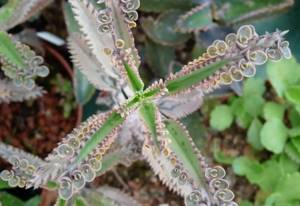
Cirrus
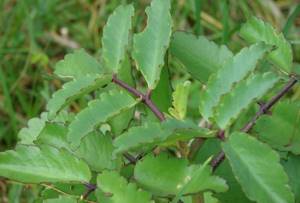
Degremona

Kalandiva
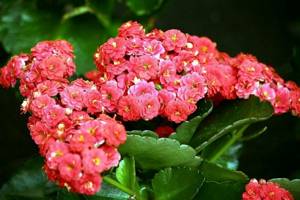
Beharskoe
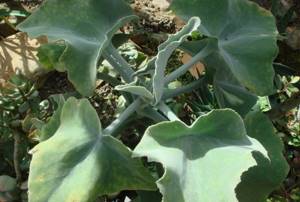
Where and how to plant?
The operation of planting already mature flowers or still very young shoots is quite simple and can be done at home. To do this, you need to create open ground on the street yourself. But you can purchase ready-made substrate in the store .
In order to make the soil yourself you need to take:
- Four parts of deciduous soil.
- Two parts of turf land.
- One part compost.
- One part sand.
You should also add charcoal or drainage to the substrate . If there is no desire or time to create soil for the future plant, then, as mentioned above, it can be purchased at flower shops. The soil must be chosen special for succulents. It is he who will be able to retain moisture for a long time. In addition to this soil for succulents, you can also use universal soil, but be sure to add coconut fiber or a little perlite to it.
If you replant with cuttings, this will be the most favorable for the plant, since new plants will quickly appear. For this procedure, it is necessary to cut off the stem of a small plant from an adult plant and place it in a container with water at room temperature for roots to appear.
It would not be superfluous to add 2 tablets of activated carbon to the same container with water to avoid rotting. To do this, cut off a small stem from the parent flower and place it in water to form roots. You can also add two tablets of activated carbon there to avoid rotting.
Lighting and location
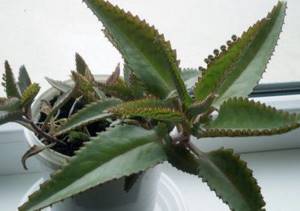
Do not allow direct exposure to sunlight - this can lead to burns on its leaves. If there is a lack of lighting, the plant will stretch out, and its buds will become small and inconspicuous.
One of the most important points for caring for this plant is twelve-hour lighting. In order for the plant to grow and develop quickly, as well as to have abundant flowering, it is necessary to provide the plant with additional lighting in winter.
Soil requirements
Any soil for succulents , which can be purchased at flower shops, is suitable for Kalanchoe.
If desired, you can make the soil mixture yourself by taking equal parts of leaf and turf soil, peat and sand. It is advisable to add charcoal or perlite to the mixture. There should be drainage at the bottom of the pot.
Growing Kalanchoe outdoors
Cultivation of the plant outdoors is allowed. But you can plant it on the site only after the soil has warmed up. Returning spring frosts damage the root system.
Sensitive roots can also suffer from overheating. For gradual adaptation, it is advisable to place the plant in a loggia or gazebo for several days. During the transition period, you will be able to observe the readiness of the plant for subsequent planting in open ground. Add sphagnum, peat and clean river sand to the container.
The plant will die outside in winter. Therefore, it needs to be transplanted into a container before the first cold snap.
Proper care
This plant can withstand fairly high temperatures, up to 30 degrees Celsius. In the winter season, the temperature should be from 16 degrees to 18 degrees Celsius. This will be the optimal temperature regime for its normal flowering and development of Kalanchoe.
IMPORTANT : At high and low temperatures, the processes of bud formation can be noticeably slowed down.
Kalanchoe also tolerates humidity calmly . Tolerates arid air well at high temperatures and low temperatures with high humidity. It will be helpful to occasionally spray lightly with water. This plant should be watered frequently and regularly. How often to water depends on several factors, such as air temperature and plant size.
If the plant is slightly in the shade, then it is necessary to water it moderately once every two to three days, while focusing on the dryness of the soil. In winter, watering should be reduced to a minimum. They react acutely to high humidity, but have difficulty withstanding low humidity.
Only when the plant becomes cramped in the pot does it need to be replanted. In early spring, young shoots begin to be pruned . They should be shortened by half the length.
Transplantation and propagation of Kalanchoe
- Replanting Kalanchoe. The plant is transplanted without any special tricks, as it takes root very easily. It is recommended to replant adult Kalanchoes as needed if they lose their decorative properties or become cramped in the pot. A not too large pot with drainage at the bottom and suitable soil is all that Kalanchoe requires when replanting.
- Reproduction of Kalanchoe . This amazing plant is capable of propagation by almost all of its parts - stem cuttings, leaves and seeds. A feature of some so-called viviparous species of Kalanchoe is the presence of babies with roots directly on the leaves of the plant.
Well-rooted cuttings and leaves of Kalanchoe can be planted almost immediately in pots filled with suitable soil; you just need to dust the cut with crushed coal. It is even better to dry the cuttings for 1-2 days. Reproduction of Kalanchoe by children does not present any difficulties at all. The plants do not require any spraying, nor do they require covering them with jars or film.
Some flowering species of Kalanchoe are propagated by seeds. Sowing is done from January to March in boxes with light soil. There is no need to sprinkle the seeds with soil; just cover the planting box with glass and lightly shade it.
The best temperature for seed germination is 18-20 degrees. The soil must be constantly moist, and the crops must be turned regularly. Grown-up Kalanchoe seedlings dive into a more spacious box. After several leaves have grown, they are transplanted into small pots (up to 7 cm).

